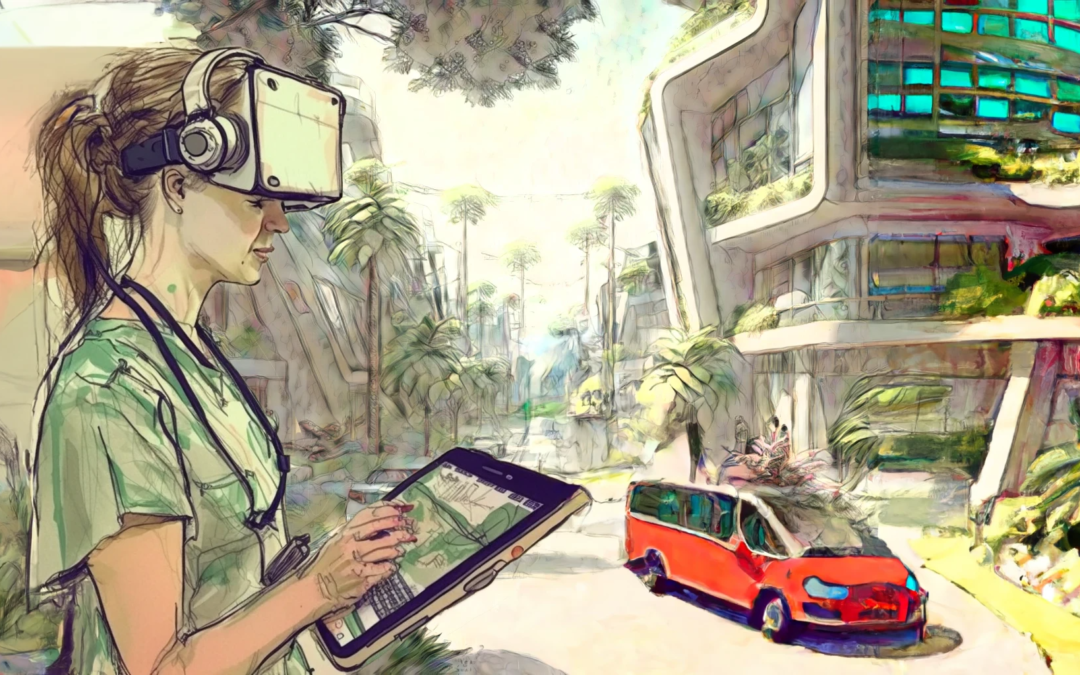Stepping further down the timeline of our project, we’ve come away from intense ideation and development sessions with a more refined problem space and a further developed 2030 future scenario.
Problem Space
Endometriosis is a chronic reproductive condition where the uterine lining grows outside the uterus, causing extreme pain, heavy periods, and internal growth that affects other organs in the body.
More than 11% of Australian women and those with a uterus suffer from endometriosis, but diagnosis is delayed by an average of 6-8 years due to a lack of awareness around the condition, current inaccurate and time-consuming diagnostic tools, and overall access to the appropriate tools.
Currently, women with symptoms of endometriosis see are often not believed by doctors and are prescribed some form of contraception to assist in symptom management. Some may also be prescribed pain medications. Most continue to find a different doctor who will listen and some might be sent to gynecologists or other specialists.
During this, many women will have blood tests, pap smears (internal swabs of the vagina, usually the cervix), and scans (MRIs, trasnvaginial (internal pelvic) ultrasounds, transabdominal (external) ultrasounds), however, these scans are not always consclusive and do not always assist in the diagnosis of endometriosis. The last resort diagnostic tool is through a laparoscopy, and invasive keyhole surgery procedure that looks to identify the tissue growth in and around the uterus.
We are addressing the delay in diagnosis of endometriosis by tackling the lack of accessibility and early awareness to achieve a streamlined diagnostic process.
2030 Future Scenario
Our vision of 2030 shows that there is a new focus on responsible resource consumption, with emphasis on renewability and sustainability of energy, resources and materials. There has also been a boom in urban farming in car parks and areas that are no longer as populated. Infrastructure and transport has taken the leap into self-driving vehicles, adapting to the mobility of the population shifting out of metorpolitan areas.
Rural and regional areas are still in need to better healthcare access, particularly with pandemic-lead remote working prompting people to move out of city centres. The reintroduction of the Carbon Tax uses AI to track carbon emissions, but ethical concerns remain surrounding the use of AI for data collection, storage and analysis. Rural infrastructure has also improved thanks to a “green jobs grant” but specialised healthcare is still sought after.
Remote healthcare is being explored due to remote work and the use of AI, which rural communities are adapting to resolve long-standing healthcare challenges. And the use of virtual/augmented reality gives more opportunities to build into quality education, particularly in hands-on fields such as medicine and engineering. Healthcare is prominently looking at adapting to in-clinic care as well as the adjustments to self-management appointments as well as ‘Health at Home’.
Team Snapshot
These last few weeks have seen a great step in a more focused direction, and we’ve been really excited to see where our concept is taking us.
Next Steps
- Develop our chosen concept further
- Stakeholder engagement, technology evolution, and our implementation roadmap to 2030
- Prepare for The FREEZE!
Watch our Design Details Presentation here!


0 Comments